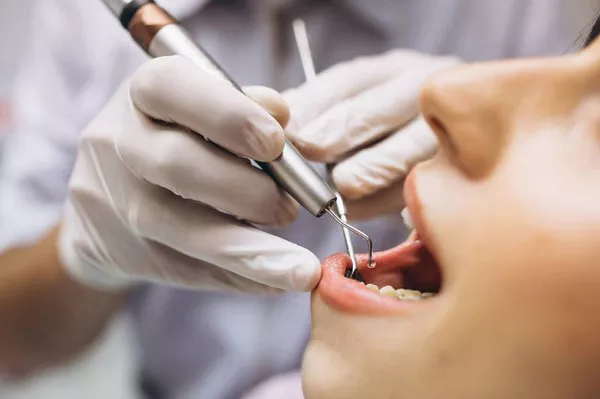Dental fillings play a pivotal role in preserving and restoring the integrity of teeth affected by decay. However, a common concern among individuals who have undergone dental fillings is the potential for increased tooth sensitivity. In this comprehensive exploration, we unravel the intricacies of how fillings can influence tooth sensitivity, examining the contributing factors, dispelling myths, and offering insights into managing this common post-filling experience.
Understanding Dental Fillings:
Purpose of Dental Fillings:
Dental fillings are employed to treat cavities and restore teeth damaged by decay.
The primary objectives include preventing further decay, restoring the tooth’s structural integrity, and maintaining proper functionality.
Types of Dental Fillings:
Various filling materials are used, such as amalgam (silver), composite resin (tooth-colored), gold, and porcelain.
The choice of material depends on factors like aesthetics, durability, and the extent of the decay.
Fillings and Tooth Sensitivity:
Temporary Sensitivity:
It’s common for individuals to experience temporary sensitivity after getting a dental filling.
This sensitivity is typically short-lived and often occurs in response to the filling procedure itself.
Proximity to Nerve Tissue:
The process of preparing the tooth for a filling may involve removing decay close to the tooth’s nerve tissue.
Proximity to the nerve can lead to temporary sensitivity, which gradually diminishes as the tooth adjusts.
Factors Contributing to Post-Filling Sensitivity:
Size and Depth of the Cavity:
Larger and deeper cavities may necessitate more extensive dental work, potentially impacting the tooth’s sensitivity.
The size and depth of the cavity influence the proximity to nerve endings and the overall impact on tooth sensitivity.
Type of Filling Material:
Different filling materials have varying thermal conductivity, affecting how teeth respond to temperature changes.
Amalgam fillings, for example, may conduct temperature more effectively than tooth-colored composite resin.
Dispelling Myths about Fillings and Sensitivity:
All Fillings Cause Sensitivity:
A common myth is that all dental fillings cause sensitivity.
Sensitivity is often a temporary response to the filling process and can vary depending on individual factors and the specific circumstances of the dental work.
Sensitivity Equals Nerve Damage:
Experiencing sensitivity after a filling does not necessarily indicate nerve damage.
Most post-filling sensitivity is temporary and related to the tooth’s adjustment to the restoration.
Managing Post-Filling Sensitivity:
Over-the-Counter Desensitizing Toothpaste:
Desensitizing toothpaste, available over the counter, can help alleviate post-filling sensitivity.
These toothpaste varieties typically contain compounds that block nerve signals, reducing sensitivity.
Avoiding Extreme Temperatures:
Individuals experiencing post-filling sensitivity should avoid extreme temperatures in food and drinks.
Consuming hot or cold items can exacerbate sensitivity, and moderation is key.
Regular Dental Check-ups:
Routine dental check-ups are essential for monitoring the health of filled teeth.
Dentists can assess and address any lingering sensitivity concerns during these visits.
When to Seek Professional Advice:
Persistent or Severe Sensitivity:
If sensitivity persists or becomes severe after getting a dental filling, seeking professional advice is crucial.
It could indicate an issue that requires further evaluation by a dentist.
Painful Bite or Chewing:
Pain during biting or chewing, especially after a filling, should be promptly addressed.
It may suggest an improper bite alignment or other complications that need attention.
Conclusion:
In conclusion, understanding the relationship between dental fillings and tooth sensitivity is vital for individuals seeking clarity after undergoing restorative dental procedures. While post-filling sensitivity is common, it is typically temporary and related to the tooth’s adjustment process. Factors like the size of the cavity and the type of filling material can contribute to the level of sensitivity experienced. Dispelling myths and knowing how to manage sensitivity through over-the-counter solutions and lifestyle adjustments empower individuals to navigate the post-filling period more confidently. It’s crucial to recognize when persistent or severe sensitivity requires professional attention, ensuring that any potential issues are addressed promptly. Ultimately, the journey from dental fillings to restored oral health can be smoother with informed awareness and proactive dental care.
How Long Does Cavity Filling Take
How Long Does it Take to Do a Cavity Filling?
How long does one cavity filling take?





























